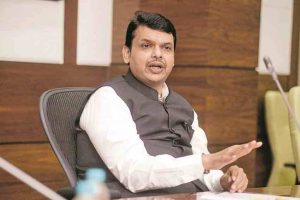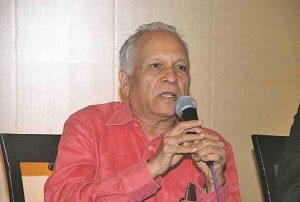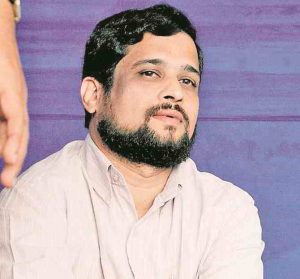
The state became the first in the country to pass a law that lists attacks on media persons and such establishments as a cognisable, non-bailable offence. But its effectiveness will depend on how well it is implemented
~By Ajith Pillai
On April 7, the last day of the state’s budget session, Maharashtra created history of sorts. It became the first in the country to enact a law that protects journalists and media houses from attacks and penalises perpetrators of crimes against them. The state legislature passed the Maharashtra Media Persons and Media Institutions (Prevention of Violence and Damage or Loss to Property) Act 2017, without any discussion.
The Bill was drafted in 2010 after journalist organisations, including the Patrakar Haal Virodhi Samiti (Committee Against Attacks on Journalists) had stepped up their demand for a new law. But it took seven years for the Bill to be cleared by the assembly.

Introducing it, Maharashtra Chief Minister Devendra Fadnavis said a law was required to check “rampant instances” of violent incidents against the media. “In order to effectively curb the occurrences of such incidents, protect and safeguard the media persons and their property and that of the media houses in the state, the government considered it expedient to enact a special law,” he said.
The BJP-led government’s move has been widely appreciated by journalist organisations in the state. Dharmendra Jore, secretary of the Mumbai Press Club issued this statement: “The club appreciates Chief Minister Devendra Fadnavis, who also heads the home department, for expediting the process of law-making. We thank Fadnavis for providing us with a legal deterrent which will be effective in ensuring safe working conditions for working journalists. Henceforth, we will expect the law enforcement agencies to apply the law whenever needed to bring the accused to book and punish them in a court of law.”

In the concluding part of the statement is the hope that the new law will be effectively applied. That journalists in Maharashtra have been the target of attacks is well-known but poorly documented. According to estimates of the last four years, there have been as many as 337 attacks on journalists. Many of the cases which involved intimidation of individual media persons by political leaders and their underlings, the mafia and by businessmen were not sensational enough to grab headlines. Many were from the districts and would have escaped the notice of lawmakers but for journalist groups who have been actively campaigning for enacting a stringent law.
There is no dearth of sceptics who read political motives into Fadnavis’ enthusiasm to push the bill. The move, they allege, is to not only woo the media but also to blunt one of the instruments frequently used by the Shiv Sena, namely, controlling the press through intimidation. As is well known, though the BJP and Shiv Sena are in alliance, they are not on the best of terms and the former currently sees the latter as a dispensable ally who needs to be pushed to the margins. Many wonder if the new law is intended to hit the Sena.

One other criticism is that the law does not cover freelancers and stringers. According to government sources, when media houses and journalist bodies sent their feedback to the draft bill earlier this year, they did not mention free lancers. Stringers, those who have a contractual arrangement with media houses are covered by the law. It was felt that including all those who contribute even occasionally to publications and channels would make the Act “unwieldy” and too broad to implement. The issue of freelancers and stringers has particular significance in Naxal-affected districts where papers don’t own up so-called freelancers who function as regular journalists and report news.
Media Targetted
- March 31, 2017: Sudhir Suryawanshi, a journalist with DNA newspaper and a friend were attacked in broad daylight by unidentified persons in Navi Mumbai
- November 4, 2016: Journalists and photographers on routine coverage, assaulted by security guards outside the Tata Group headquarters who denied them access
- August 22, 2015: Senior Marathi journalist Nikhil Wagle threatened with dire consequences by Hindu group, Sanatan Sanstha, for his political reportage
- September 1, 2015: Syamsundar Sonar, a journalist with Marathi daily Prahaar, labelled an anti-Hindu by the Sanatam Sanstha. He sought police protection
- December 1, 2015: Offices of Lokmat newspaper attacked in several locations of Maharashtra by Muslim groups. Reason: they took offence at an illustration of a piggy bank used in a story on ISIS funding
- June 11, 2011: J Dey, a journalist with Mid-Day newspaper, gunned down by members of the underworld in Kurla, in suburban Mumbai
- November 20, 2009: Shiv Sainiks attack offices of news channel IBN Lokmat in Mumbai and Pune for allegedly misquoting an article written by Bal Thackeray on Sachin Tendulkar
- June 6, 2008: Activists of Shivsangram, said to be linked to the NCP, attack senior journalist Kumar Ketkar’s house for allegedly defaming Shivaji in an article
But what does the Act entail? Here are some pertinent points:
- Any act of violence against a media person or damage to his or her property or that of a media institution shall be prohibited
- All attacks on journalists and media houses in Maharashtra shall be treated as a cognisable and non-bailable offence. It will be tried by a First Class Judicial Magistrate
- Cases under the new law will be investigated by an officer not below the rank of a Deputy Superintendent of Police (DySP)
- The law prescribes punishment up to three years or fine up to Rs 50,000 or both in case of violation. The offenders will have to pay compensation for damages caused and reimburse medical bills as decided by the court
- The law has safeguards against false complaints filed by media persons. In such a case, the complainant shall also be tried and given the same punishment given to an offender—three years’ imprisonment or a fine of Rs 50,000 or both.

A media institution has been defined by the Act as “any registered newspaper establishment, news channel establishment, news-based electronic media establishment or news stations”. A media person is described as someone whose principal vocation is that of a journalist, who is employed on regular or contract basis, including editor, news editor, reporter, correspondent, cartoonist, news photographer, television cameraman, leader writer, feature writer, copy tester and proof reader. Administrative and marketing personnel are not included. Violence under the new law is “an act which causes or may cause any harm, injury or endangering life of a media person during the discharge of his duty as a media person, or causing damage or loss of property belonging to any media person or media institution”.
Though the Bill was drafted in 2010, it took the sensational murder of Mid-Day journalist J Dey at the hands of the underworld in June 2011 for the government to take a first serious look at the proposed law. Suddenly, there was a flurry of activity which subsequently petered out.
But will a new law alone help?
Jatin Desai, former president of the Bombay Union of Journalists, who actively monitors the media in the state, feels that the Act will be effective if it is properly implemented on the ground. “The new law may give a sense of confidence to journalists. But if you ask me, I feel it cannot protect a media person because journalism is a risky profession and one must accept that. Also, the law comes into play post-facto—after an attack has happened. Much will depend on whether it is used impartially by the authorities.” For example, what happens when enforcement agencies are guilty of targeting journalists?
Desai says that a similar law was enacted to protect doctors in Maharashtra from attacks by angry relatives of patients. But despite new laws, doctors at government hospitals continue to be targeted. This could well be the case with journalists, he adds, although he welcomes the Act.
However, all said and done, Fadnavis has managed to come out looking good. Welcoming the new law, SM Deshmukh, convenor of the Patrakar Haal Virodhi Samiti, said: “We launched the movement for a special law for the protection of journalists in August 2010. We knocked at the doors of successive CMs, all of them promised a special law, but no concrete steps were taken to bring in the legislation. Fadnavis not only gave an assurance, but made it known to the media that he was with them.”

